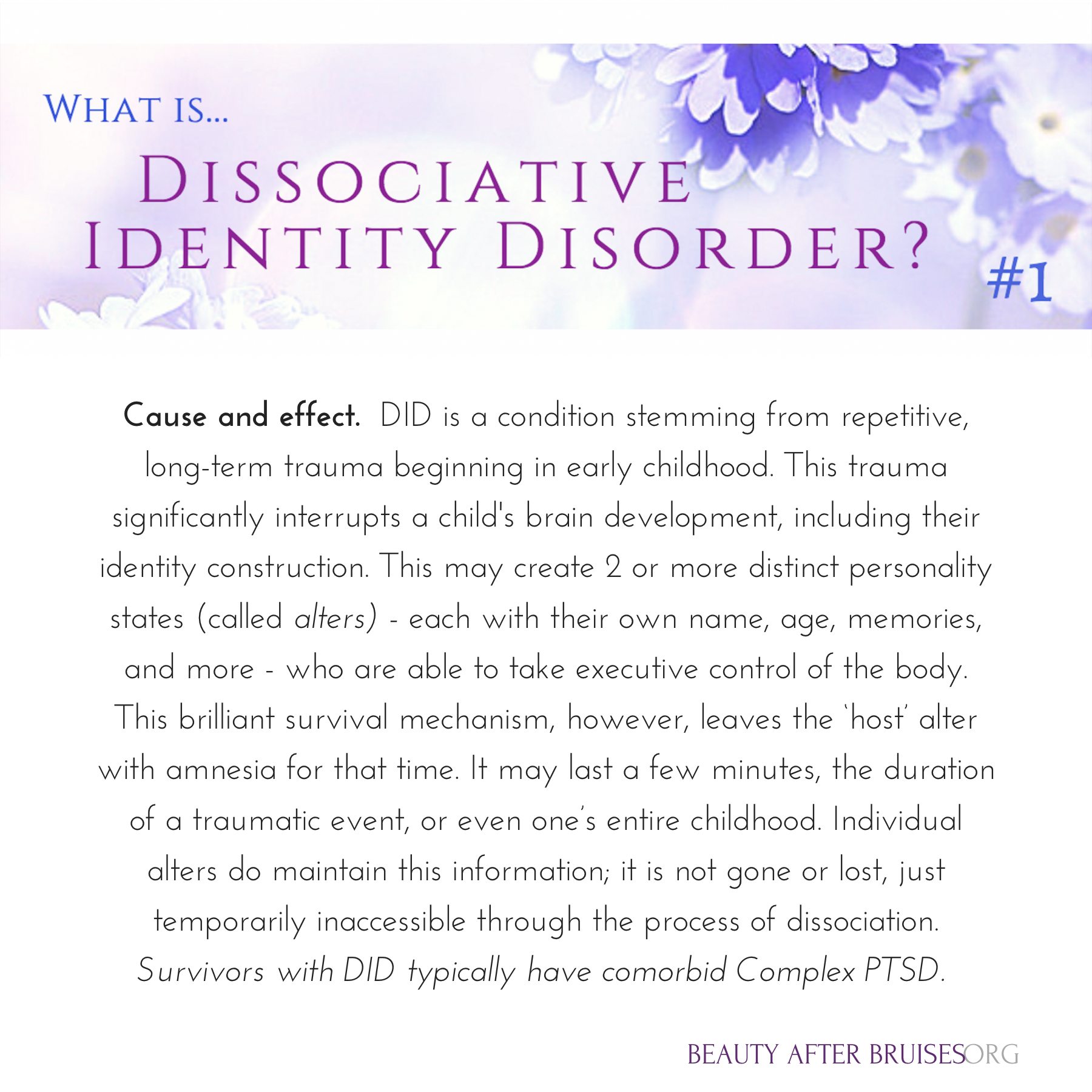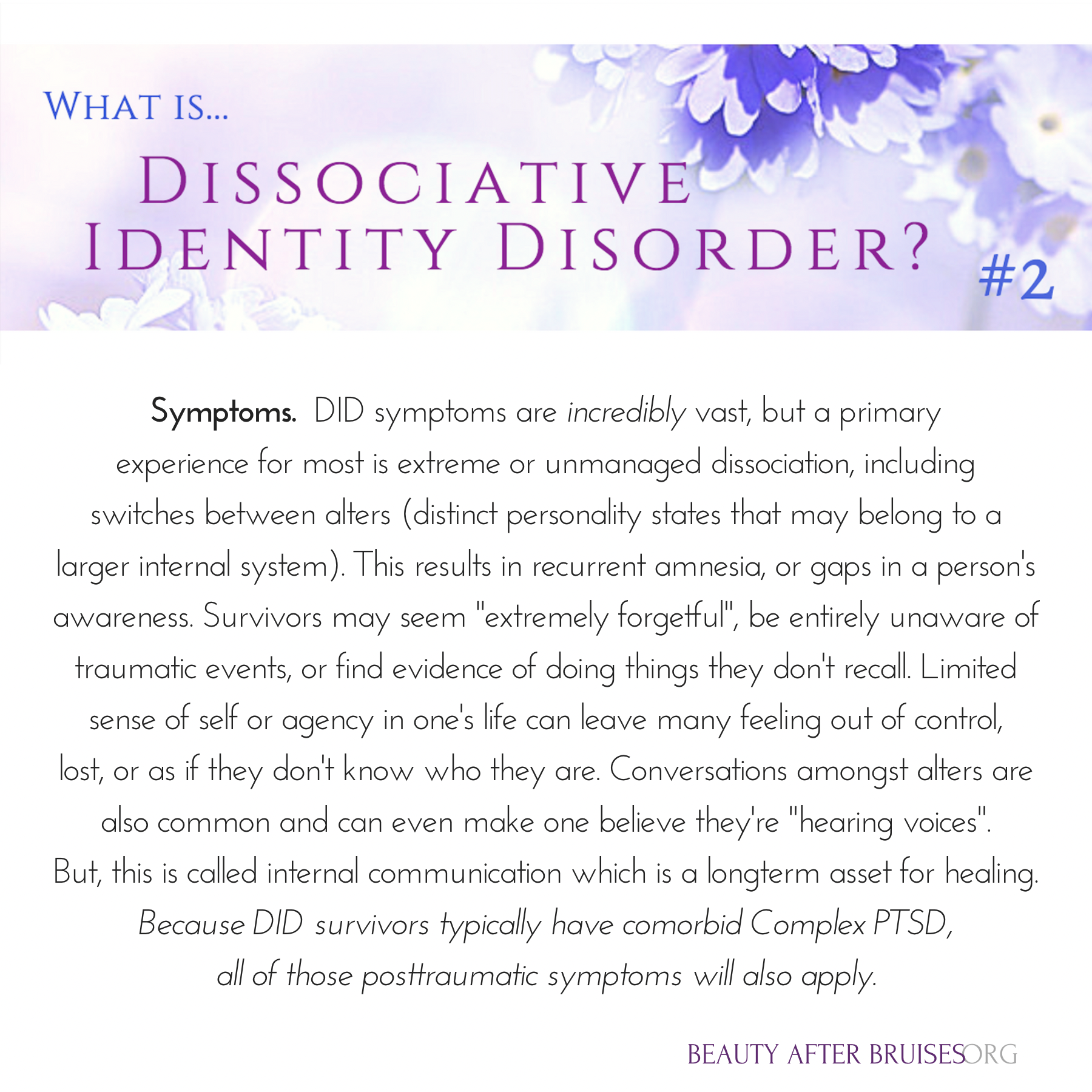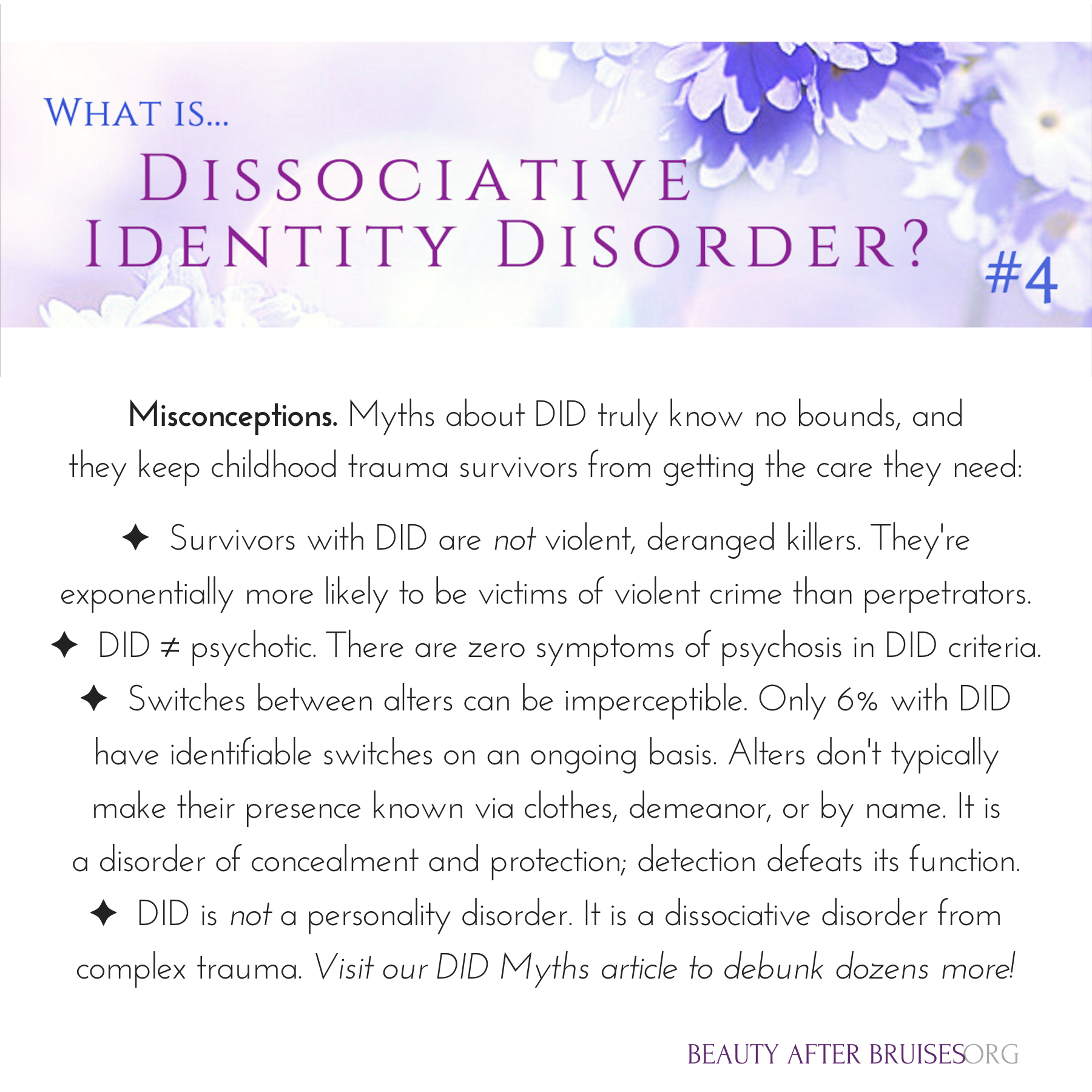When we talk about dissociative trauma disorders, we’re referring to conditions that stem from childhood trauma and fall furthest on the dissociative spectrum. These include Dissociative Identity Disorder (DID) and both subtypes of Other-Specified Dissociative Disorder (OSDD-1a and OSDD-1b).
Not all dissociative disorders are inherently complex trauma-based (e.g. depersonalization-derealization disorder), though, for most, trauma plays a considerable role. Conditions like Dissociative Identity Disorder and Other Specified Dissociative Disorder, however, develop in response to ongoing, longterm, and at times extreme, complex trauma that occurred in early childhood.
While trauma-based conditions themselves, both DID and OSDD are typically comorbid with Complex PTSD. All three conditions share significant symptom overlap, but Complex PTSD really speaks to the posttraumatic responses on a more neurophysiological level, as well as the difficult relationships survivors may have with others and the world around them. DID and OSDD diagnoses describe the fragmentation of a survivor’s core identity - the big question of “who am I?”. With trauma so strongly interrupting the development of a young child’s mind, large chunks of information, personality, emotion, traumatic material, and more can become involuntarily compartmentalized - possibly even to the point of amnesia - all in an attempt to protect itself and that child’s overall safety. Unfortunately, this brilliant, beautifully protective mechanism becomes maladaptive as that child grows older and leaves the environments in which this way of being was required to survive.
• This page is under construction •
Survivors come first. We believe our education on dissociative disorders should only be done in as accurate, clear, and compassionate a manner as we’re capable of bringing you.
When we have sufficient time to meet that standard - and can fully honor those it represents on our official page - the remainder will be published. We are a small team with many emergent roles to fill at once, but you don’t deserve subpar education, so things are on unfortunate delay {on the website at least}!
In the meantime! We would love to direct you to our existing materials to still receive a comprehensive introduction and richer understanding of Dissociative Identity Disorder.
◆ Dispelling DID Myths ◆
Identifying and challenging over three dozen myths and misconceptions about DID
◆ What is DID?: A 5-part Series ◆
This infographic series goes deep into DID in an easily-digestible way - perfect for social media education! Because it’s five parts, we’ll make it easy and link Parts 1-5 here: x, x, x, x, x
◆ You Did Not Shatter ◆
A message for any DID/OSDD survivor who was led to believe their mind collapsed or shattered under the weight of insurmountable trauma. It actually did no such thing.









